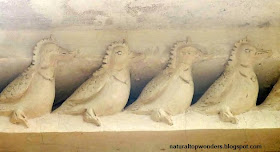Gingee Fort - where war sleeps in peace
Gingee (also spelled Chinji or Senji) is a scenic stopover on the Bangalore-Puducherry route best known for the picturesque ruins of the Rajagiri Fort. The three boulder-strewn hillocks over which the fort sprawls are popular with trekkers, many of whom are barely aware that the soil underfoot has been trampled by armies of successive dynasties since the 9th century. The well-maintained fort and its precincts offer an engaging half-day historical tour. It is also popular with artists. For centuries, Gingee has been washed with the blood of conquerors. Today, the ruins sleep in peace, barely disturbed by the footfalls of tourists.
The Gingee Fort occupies three hillocks connected by walls enclosing a total area of 7 square kilometres. The name Gingee probably came from Sengiri, Tamil for Red Hill. Built by the Cholas, the strategic fort passed into the hands of the Hoysalas, the Vijayanagar emperors and thence to the Gingee Nayaks. The Mughals, the Bijapur Sultans and the Marathas also controlled the fort successively and each one strengthened it with modifications and new structures.
A bathing tank in the fort precincts. After the fall of the Marathas, the Gingee fort was then occupied by the Carnatic Nawabs, who ceded it to French colonialists who had their stronghold in Pondicherry. Briefly, the fort fell into the hands of Hyder Ali of Mysore and was then seized by the British, in whose hands it remained until Independence despite skirmishes with the French.
The Kalyana Mahal, presumably the living quarters of the queens, is one of the most recognizable structures in the fort premises and exhibits Indo-Islamic architectural styles. The Maratha king Shivaji hailed Gingee Fort as the most impregnable fortress in India and the British called it the “Troy of the East”. It was declared a national monument in 1921 and is currently maintained by the Archaeological Survey of India.
A mosque in the Gingee Fort complex. Dr C K Gariyali, an Indian Administrative Service officer who served as District Collector of Tamil Nadu’s South Arcot district in the early 1980s, wrote of a unique community of Gingee Muslims who were descended from early Mughal army commanders who arrived in India along with Emperor Babur.
The moat outside the Gingee Fort lined by a row of palmyra palms. Entry to the fort is restricted to ticket-holders.
A view from the walkway inside Gingee Fort. The Kalyana Mahal can be seen against the backdrop of the Krishnagiri hillock.
Enclosed by walls of hillocks, the fort was one of the most strategic in southern India. Today, the ruins of centuries are well preserved.
Every dynasty that laid claim to Gingee left remnants of individual architectural styles, making the fort a smorgasbord of historical relics. Although its past was probably washed with the blood of hundreds, today war and peace sleep in harmony at Gingee.
One of the best maintained architectural sites in southern India, Gingee Fort is beautifully landscaped with acres of greenery. In the winter monsoon, pleasant days warmed by a mild sun beckon artists inspired by the picturesque grandeur of the ruins.
Stone reliefs softened by age and the elements still survive at Gingee, making it a happy hunting ground for students of history, archaeology and architecture.
Ornate birds decorating a structure at Gingee Fort speak of the commingling of architectural influences.











No comments:
Post a Comment